The Adversarial

Welcome to The Adversarial. Every other week, we’ll provide you with expert analysis on America’s greatest challengers: China, Russia, Iran, North Korea, and jihadists. Read more below.
***
Iran
In a significant escalation between Iran and Israel, a recent attack on the consular section of the Iranian embassy in Damascus, widely attributed to Israel, resulted in the deaths of two senior Islamic Revolutionary Guard Corps commanders and five other Iranian officers. Among the casualties was Brig. Gen. Mohammad Reza Zahedi, considered the top Quds Force commander in the Levant.
The attack on an Iranian diplomatic facility has been perceived within Iran as a direct assault on its sovereignty, with some analysts labeling it as an outright declaration of war by Israel. This perspective has notably heightened pressures on the Iranian government to retaliate. Traditionally, Tehran has employed a strategy of “strategic patience,” often refraining from direct responses to Israeli actions and instead delegating reprisals to its proxy forces across the region. However, this approach has faced criticism among the regime’s supporters for its perceived inefficacy and as a potential sign of weakness, especially as proxy forces have failed to establish a reliable deterrent against Israeli attacks.
Despite the calls for a direct response, there’s a cautionary stance from another group of analysts and political figures warning against falling into a potential Israeli “trap” aimed at provoking a broader conflict that could draw in the United States. Supreme Leader Ayatollah Seyyed Ali Khamenei, among other senior officials, has vowed revenge against Israel, though the nature of Iran’s response — whether direct, indirect, or a blend of both — remains uncertain. Nonetheless, this situation has already escalated tensions to a potentially dangerous level, suggesting the beginning of an escalatory cycle with unpredictable consequences.
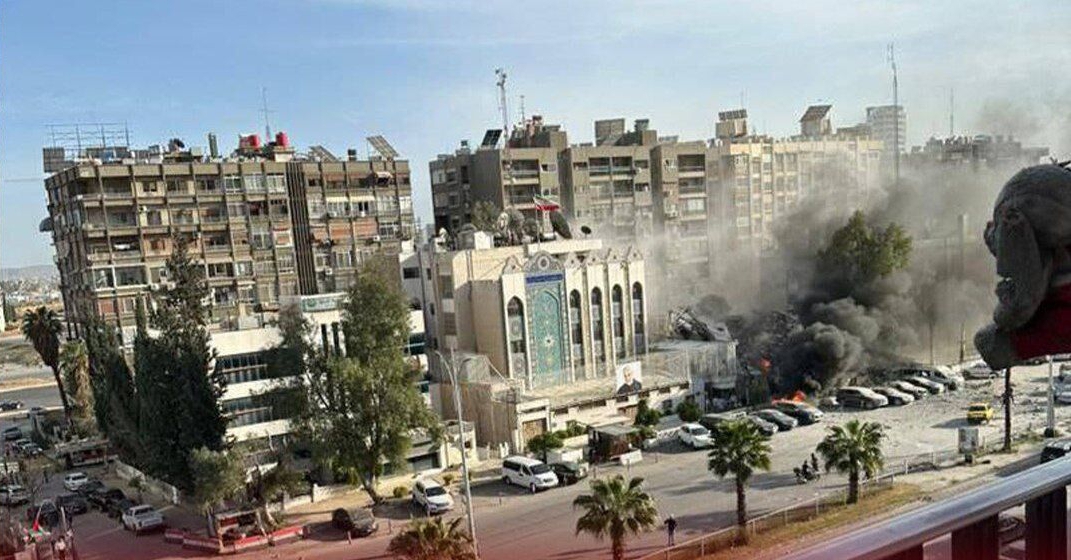 The Iranian consulate in Damascus after the attack via Wikimedia Commons.
The Iranian consulate in Damascus after the attack via Wikimedia Commons.
China
The tension between China’s attempts to revive economic growth while maintaining an assertive security posture both domestically and in the Indo-Pacific is on display of late. In late March, at the China Development Forum (an annual gathering for CEOs and officials hosted by the State Council), Premier Li Qiang and other senior Chinese officials attempted to build international confidence in China’s economy and business environment, emphasizing the country’s prospects for continued growth and efforts to reduce barriers for foreign firms. While some visitors — including a predominantly American delegation that met with Xi Jinping after the Forum — expressed optimism and commitment to the Chinese market, others, including International Monetary Fund Managing Director Kristalina Georgieva, warned of the need for further policy changes.
Meanwhile, on other fronts, China’s drive toward internal securitization and external assertiveness showed no sign of moderation. As the China Development Forum wrapped up and the Boao Forum (another business-government forum held on Hainan Island) began, the Ministry of State Security released a social media post warning that international consulting firms had been used to steal secrets — the warning, though consistent with previous ministry messaging, seemed potentially at odds with the messaging focus of the China Development Forum. Earlier that week, American and British officials had also filed charges and accused a Chinese-affiliated hacking group, APT31 — which it linked to the Ministry of State Security — of a sweeping cyber espionage campaign against officials, journalists, dissidents, and companies. New Zealand also said it had been targeted.
Finally, tensions continued in the South China Sea, particularly at Second Thomas (Ayungin) Shoal, where Chinese use of water cannons to block Philippine resupply efforts again resulted in injuries to ship personnel and damage to the vessel. As Chinese actions have become more aggressive, the Philippine government has begun releasing video of the incidents to build support for its opposition to Chinese harassment — Indian minister S. Jaishankar expressed support for Manila during a visit last week. President Ferdinand Marcos Jr. vowed to respond to the latest with (as yet unspecified) countermeasures, while Beijing blamed the Philippines and “external forces” backing it for escalation. In a call with his Philippine counterpart on March 27, Secretary of Defense Lloyd Austin reiterated that the U.S. commitment to defend the Philippines under the Mutual Defense Treaty applies to armed forces and public vessels operating in the South China Sea.
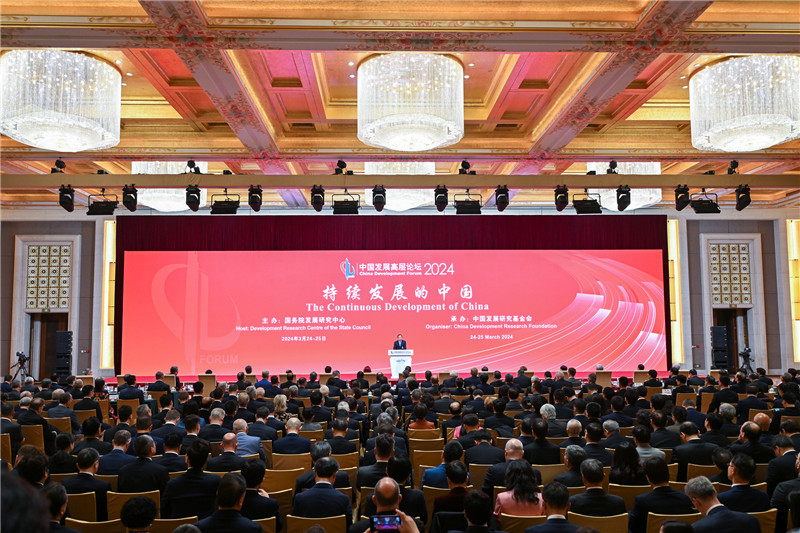 The opening of the China Development Forum 2024 in Beijing via the State Council of the People’s Republic of China.
The opening of the China Development Forum 2024 in Beijing via the State Council of the People’s Republic of China.
North Korea
On April 2, North Korea tested a new intermediate-range, solid-fuel hypersonic missile for the first time. This weapons system, though judged to be in the early stages of development by South Korea’s Joint Chiefs of Staff, would be faster to launch and difficult to intercept. In mid-March, Pyongyang conducted a ground test of the solid-fuel engine, an important milestone that teed up the April launch. Intermediate-range missiles help to fill out Pyongyang’s aim to achieve full spectrum deterrence and to shore up second-strike capabilities. Operational deployment of the system would present challenges for the U.S.-South Korean alliance’s deterrence posture. The U.N. Panel of Experts, an organization set up in order to catalog sanctions violations, suffered a blow in late March when Russia vetoed the extension of its mandate. Although the sanctions themselves, codified in U.N. Security Council resolutions, will not be affected, the absence of the panel will make it easier for North Korea and its supporters, including Russia and China, to engage in illicit proliferation activities. In the run-up to the vote, in which 13 members of the Security Council voted to extend the panel while Russia vetoed and China abstained, those two countries vied to introduce sunset provisions to relax sanctions and to reduce reporting by the panel. When that was met with resistance by the other member states, Moscow simply vectored the panel’s mandate. The panel might be revived at a later time, but Moscow would likely demand concessions and relaxations in exchange. This development comes amidst reports that Russia is furtively supplying Pyongyang with oil in excess of U.N.-mandated limits and that the Wagner Group previously worked with North Korean officials in Syria in 2022–2023 to facilitate weapons transfers to Russia.
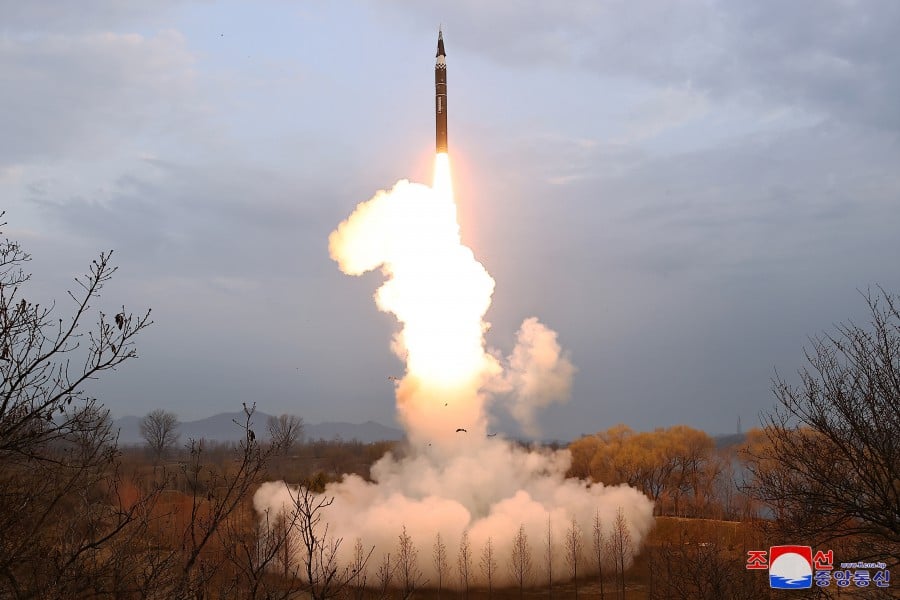 North Korea tests a new, hypersonic missile on April 2. Photo via KCNA.
North Korea tests a new, hypersonic missile on April 2. Photo via KCNA.
Russia
Ukraine is on edge. Its war effort continues to run on fumes. Ukrainians are short of munitions but are working feverishly to entrench themselves to repel Russian offensives. The Russians are making gradual but notable gains, putting even more strain on exhausted Ukrainian forces. Russian forces are experiencing significant losses in men and materiel but have the resources to continue to press their advantage. Ukraine, as a result, is losing ground. This is what winning an attritional war looks like. While Russia’s capacity to make major breakthroughs likely remains limited, President Vladimir Putin may go for broke and push for a more fulsome offensive as the weather warms. Ukraine’s fate may therefore rest on what transpires in the U.S. House of Representatives next week, as members return from recess. But Ukraine is also urgently in need of fresh troops. President Volodymyr Zelensky has been reluctant to introduce a mass mobilization but legislation is now making it through the Ukrainian parliament. In recognition of the manpower challenges, Zelensky just lowered the age of conscription from 27 to 25.
Russia is also doing more to press its air, drone, and missile advantage. The Russians are increasingly using glide bombs fired from aircraft to target Ukrainian front lines. Ukrainian air defense munitions and capabilities are being stretched thin, as Russia has over the last month increased its targeting of Ukrainian cities and infrastructure with a combined drone-missile salvo, causing water shortages and power outages. Ukraine, meanwhile, is continuing to hit back, successfully striking targets deep inside Russia, including oil refineries and a drone factory 800 miles from the border. While there are reports of concern from the U.S. government about potential escalation, these attacks bring the war home to Russia and could provide Ukraine with a degree of deterrence and a chit should there ever be successful negotiations.
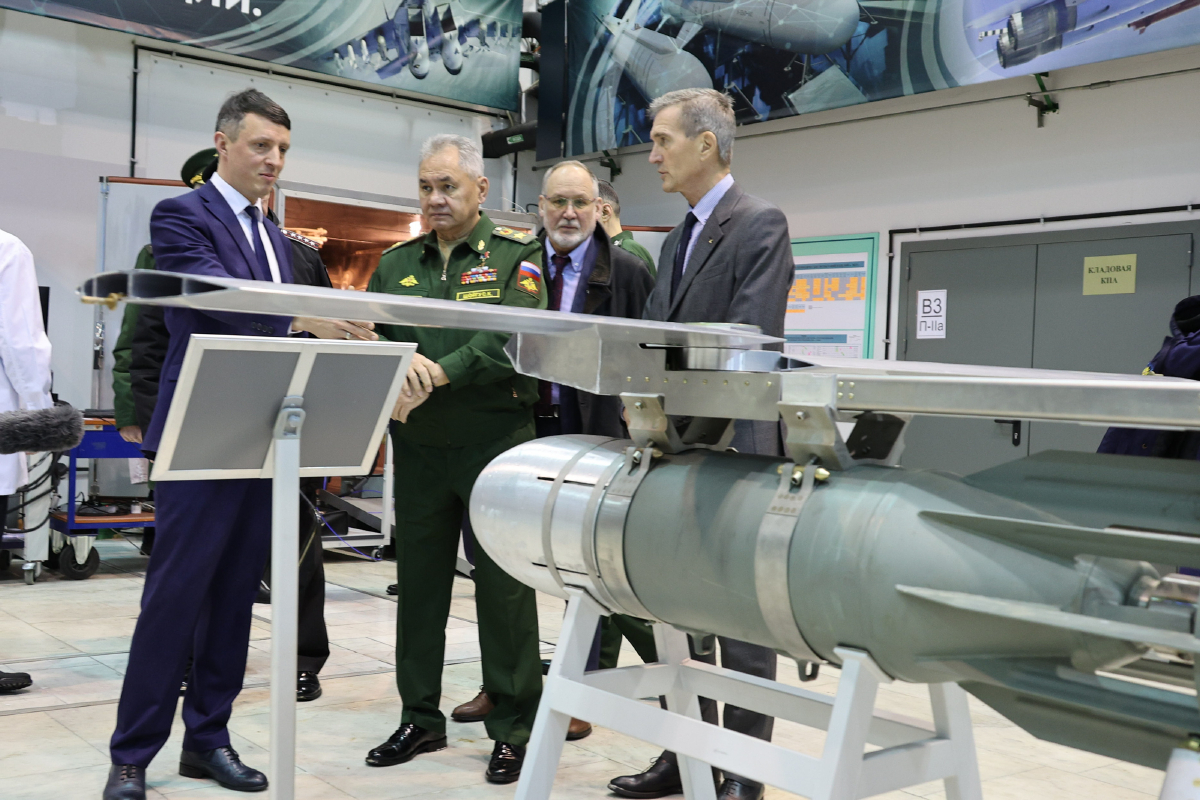 Russian Minister of Defense Sergei Shoigu inspects a FAB-1500 bomb in January. Image via the Ministry of Defence of the Russian Federation.
Russian Minister of Defense Sergei Shoigu inspects a FAB-1500 bomb in January. Image via the Ministry of Defence of the Russian Federation.
The Islamic State in Khorasan Province
The Islamic State attack in Moscow on March 22, 2024, has put a spotlight on the group’s Afghan Khorasan Province branch and its external operations. Over the past three decades, successive jihadist organizations have sought to conduct external operations beyond their local battlefields, often from safe havens abroad. The long list includes actors such as the Algerian Armed Islamic Group (when it hijacked Air France Flight 8969 in 1994), al-Qaeda (most infamously via the 9/11 attacks, but also through plots by local branches al-Qaeda in the Arabian Peninsula, al-Shabab, and al-Qaeda in the Islamic Maghreb), and the Islamic State (e.g., in Syria and Libya).
Today, the Islamic State in Khorasan Province has adopted the same strategy in Afghanistan. Yet, unlike many previous groups that relied on stable safe havens to gain more time and space for planning and training, the group has actually grown weaker in Afghanistan since the Taliban took power, while paradoxically expanding its external operations capacity. Although the Taliban has repeatedly claimed that Afghanistan will not be used as a base for such external plots, the incident rate for the Islamic State in Khorasan Province’s external operations has only picked up since the Taliban took power. Elements from the organization continue to carry out attacks inside Pakistan and have previously launched cross-border rocket strikes against Tajikistan and Uzbekistan. The group has also attacked targets in the Maldives (February and April 2020), Shiraz, Iran (October 2022 and August 2023), Kerman, Iran (January 2024), and Istanbul, Turkey (January 2024), ahead of the successful attack in Moscow. This illustrates a heightened pace of successful attacks.
If one considers both plots and attacks, this trend is even more glaring. Between the Islamic State in Khorasan Province’s founding in early 2015 and April 2022, the group was only involved in 4 external plots and attacks in the United States, Maldives, Germany, and India. This grew to 8 from April 2022– 2023 in Germany, Iran, France, and Turkey. In the past 12 months, there has been exponential growth: There were 24 plots and attacks in Iran, India, Germany, Austria, Kyrgyzstan, Turkey, Tajikistan, and Russia. While the group has not been successful in actualizing a plot in the West, it has not been for want of trying. And the rate at which the group is plotting suggests that at some point the Islamic State in Khorasan Province might successfully conduct an attack in the West, particularly in Europe.


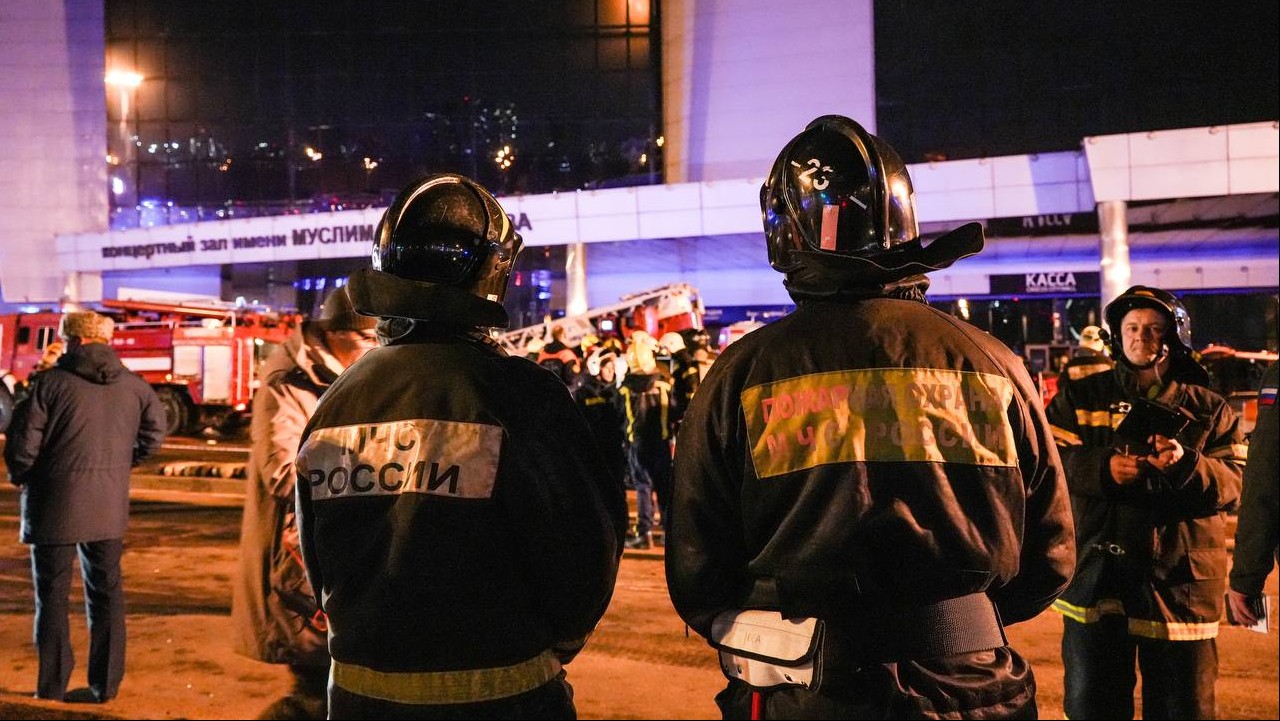 Aftermath of the attack on Crocus City Hall in Moscow by the Islamic State. Image via the
Aftermath of the attack on Crocus City Hall in Moscow by the Islamic State. Image via the